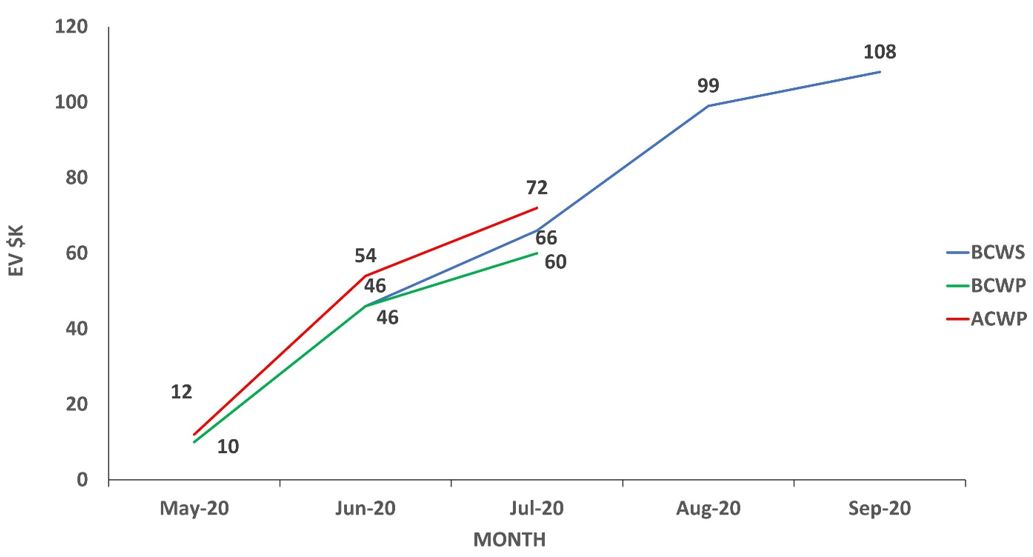How EVM is a cornerstone of project risk management

Effective project risk management is key to a successful project. Today, more work is being projectised; a trend that will increase in the future. The workforce is changing. More people want to work remotely which opens up foreign hiring opportunities. The project manager of the future will need to manage a diverse group of team members; tackle changing technology and handle many other challenges as Projecting the Future indicates.
This means excellent project management and earned value management (EVM) are cornerstones to successful project risk management. In this blog I will focus on earned value management which is an effective tool to measure project performance against the performance measurement baseline (PMB).
Most of my career was spent working in the US defence industry. Virtually all US defence contracts include a requirement for EVM. The many projects I managed had EVM as a requirement; an essential tool for project success. I was the subcontractor manager for a $60m servo-controlled antenna mount. Our contract required we flow the EVM requirement down to our major subcontractors. The problem was the subcontractor in question did not have an EVM system and had no experience or knowledge of it. As a result, I spent over two months at the subcontractor’s facility helping them set up an EVM system and teaching them how to use it.
The subcontractor in turn, purchased software for EVM analysis along with instruction as how to use it from the software vendor. The project extended by about six years. They submitted an EV report monthly. At the end of the project, the subcontractor came in on schedule and underrun by $1m. EVM was the major reason for the excellent performance.
How does EVM work?
Earned value management will identify a task that falls behind schedule as soon as it slips. Identifying PMB problems early is vital as it provides maximum time to correct the issue before it festers and causes serious impact to the PMB. The application of EVM varies among industries, practitioners, and organisations. Each new project controls method should be optimised for the organisation to reap the highest benefit from the cost spent.
It is important to structure and implement EVM properly for it to be effective. Earned value management is implemented at the work package (WP) level. If you manage each work package to successful completion, then you can be assured the project will be a success as well.
There are three critical elements to EVM:
- Planned costs are the negotiated budget and time phased over the period of performance for the project. This is called the PMB as mentioned above.
- Earned costs or value (EV) is the budget earned (or accrued) for each work package (WP) as the project progresses until the WP is completed. A WP is a task which includes the task duration and budget. For earned value to be effective, there needs to be sufficient activities under the WP to accrue enough EV for the activity to offset the actual charges. This approach will ensure a smooth EV report for the WP minimising unnecessary variance reports.
- Actual cost is the time card charges for each work package. Anyone working on the WP charges a specific charge number to facilitate finance collecting actual costs for the WP monthly. Finance collects the actual charges for each WP and with inputs on the schedule from the planner issues a monthly EV report.
There are three elements for work packages:
- Budgeted cost for work scheduled (BCWS).
- Budgeted cost of work performed (BCWP).
- Actual cost of work performed (ACWP).
It easy to see the status of the WP shown in the figure below. The actual cost of work performed (in red) is above the budgeted cost of work scheduled (blue) which means the project is behind budget. The budgeted cost for work performed (green) is below the BCWS indicating the project is behind schedule.

Understanding earned value management is vital for effective project risk management, which is the key to a successful project. It is absolutely essential alongside project management, risk management and subcontract management. In my next blog I will discuss risk management. What are some of your experiences handling project risks? Let me know in the comments.
You may also be interested in
- Earned Value Management Handbook
- The key to successful project risk management
- Understanding and managing risks is a cornerstone of project risk management
- Why subcontract management is a cornerstone of project risk management
Image: MJgraphics/Shutterstock.com


0 comments
Log in to post a comment, or create an account if you don't have one already.